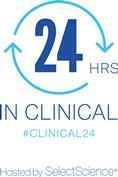In May 2019, Great Ormond Street Hospital (GOSH) made headline news with a report of pioneering bacteriophage therapy in the treatment of a 15-year-old cystic fibrosis patient
Key to the GOSH case was the availability of a bank of in excess of 10,000 phages isolated over the last decade or so by Professor Graham Hatfull and his team at the University of Pittsburgh, using Mycobacterium smegmatis as the propagating host. This phage bank has expanded through the PHIRE and SEA-PHAGES programmes, discovery-based programmes for high school and undergraduate students. Screening of this collection identified three phages that are capable of infecting M. abscessus subsp. massiliense GD01, a rough-colony morphotype recovered from skin lesions on the GOSH patient: phages Muddy, ZoeJ and BPs (so-named by the students who isolated the phages in Durban, South Africa, 2010; University of Pittsburgh, 2006; and Providence College, 2012, respectively). All three phages were genetically distinct, based on whole-genome sequence analysis. This finding is significant since the use of a cocktail of phages is the preferred path for development of a therapeutic, in order to reduce the probability and timescale for emergence of phage resistance.
While phage Muddy kills GD01 efficiently, limitations were observed for phages ZoeJ and BPs. Both are lysogenic (i.e., they each have the capacity to integrate their genomes into the host bacterium). This is considered to be an undesirable trait in any phage being developed for use as a therapeutic because of the propensity for gene transfer and the ability of a phage to introduce new genes with undesirable properties, including enhanced virulence.
Hatfull and his team therefore set about to engineer ZoeJ and BPs, tailoring them for therapeutic application, using the Bacteriophage Recombineering of Electroporated DNA (BRED) technology previously developed by the Hatfull laboratory to generate mutations including unmarked deletions, point mutations, small insertions and gene replacements in lytically replicating mycobacteriophages. In this case, BRED was used to precisely remove the gene encoding the repressor protein, the key protein that governs the switch between the lytic (killing) and lysogenic (dormant) stages, thereby locking the phages in their host-killing mode. For phage BPs and its deletion mutant, an additional problem was observed: that of relatively poor infection of the GD01 test bacterial strain. To address this issue, spontaneous mutants were isolated with higher levels of infectivity for GD01 that harboured single point mutations in the portal gene. Within 6 months of treatment with the phage cocktail (109 plaque-forming units per dose of each phage) given twice per day, lung and liver function improved, and infected areas on the patient’s skin resolved with only one new infection appearing. No side effects of phage treatment have been observed. The patient has been released from hospital while continuing to receive infusions.
The GOSH clinical case is significant for two reasons. Firstly, it is a pioneering use of phages in humans for the treatment of mycobacterial infections; these are notoriously difficult to treat because of their ability to survive and persist in the host macrophage. Secondly, it is the first example of using genetically engineered phages in a therapeutic application. What is the regulatory position on this? Owing to the approach used for precise gene deletion, the engineered phages used in the cocktail were not considered to be genetically modified organisms (GMOs) by the UK Health and Safety Executive (HSE) on the basis that (a) they contained only native phage DNA sequences, and (b) no exogenous DNA sequences had been inserted. The phages were also considered to be unlikely to cause harm in humans, plants or animals. Accordingly, a case for phage treatment was made to the UK Medicines and Healthcare Regulatory Agency (MHRA) on the basis of the urgent clinical status of the patient on a palliative care pathway for which other treatments had failed, and the high mortality of other lung transplant patients with disseminated Mycobacterium abscessus infections. Procedures were developed and approved to mitigate all risks associated with the import and administration of the phage cocktail, and the phage cocktail was therefore treated as an unlicensed product from a non-GMP research facility, under The Human Medicines Regulations 2012.
What does this mean for the future development of phage therapy? The scientists behind this treatment are quick to point out that, in the absence of a clinical trial, one cannot exclude the possibility that patient recovery could potentially have occurred in the absence of phage treatment. Identifying the appropriate phage for each patient is challenging and time-consuming. While this particular patient was successfully treated at GOSH, a second patient infected with a genetically distinct M. abscessus strain died because of the failure to identify appropriate phages in time. Hence, the very feature that makes phage therapy attractive (specificity for a limited number of bacterial host strains), can also be a mitigating factor to a successful treatment outcome. Due attention also needs to be given to the possibility of developing phage resistance. While in the GOSH study a cocktail of phages was used from the outset as a strategy to delay or reduce the probability of emergence of phage-resistant GD01, the team is continually monitoring the patient who receives regular phage infusions. So far, resistance has not been observed in the patient, but challenge tests undertaken in the laboratory have led to the isolation of GD01 mutants that are resistant to ZoeJ and BPs, while remaining sensitive to Muddy. So, there is no room for complacency – Hatfull’s team continue to search for new phages, and they have already isolated a fourth phage that could be added to the cocktail.








No comments yet